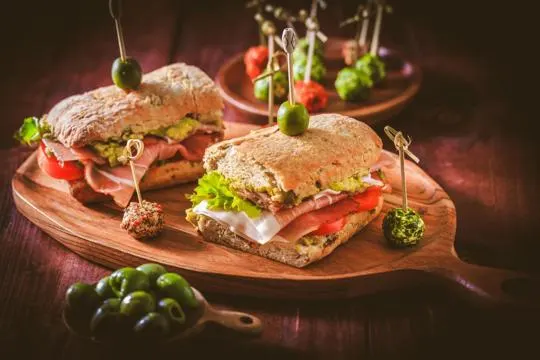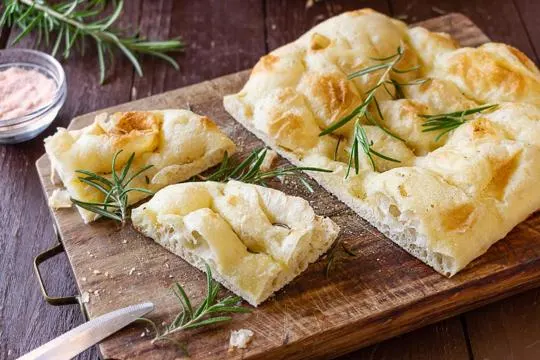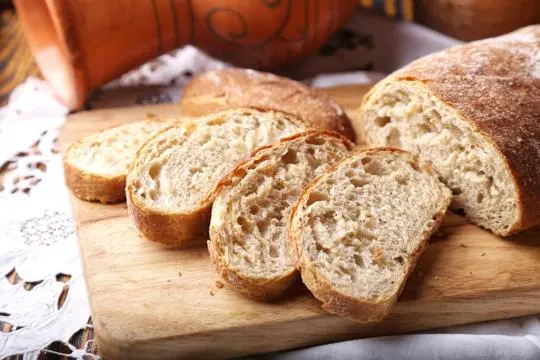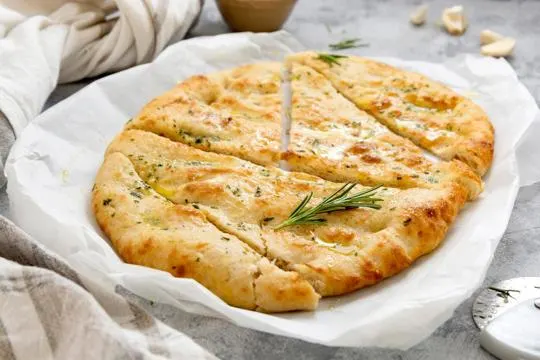Summary of key points
The primary distinction between ciabatta and focaccia lies in their dough and texture. Ciabatta bread has a moist, porous texture ideal for sandwiches, characterized by its elongated, slipper-like shape. Focaccia is a flatter, oven-baked Italian bread typically seasoned with olive oil, salt, and sometimes herbs, offering a denser and richer flavor.
Ever stood in front of the bakery section, scratching your head over ciabatta and focaccia? We’ve all been there. Bread can be confusing. Here’s the lowdown without the fluff.
Ciabatta is that airy, light bread with a crisp crust. Perfect for sandwiches. Focaccia? It’s thicker, richer, often dotted with herbs and olive oil.
I tried making both once. Disaster doesn’t begin to cover it. Oops. Lesson learned. We’re here to clear the mix-up. Not all bread is created equal. And that’s a good thing. Variety, right?
Ciabatta vs Focaccia. It’s more than just about choosing your lunch. It’s about knowing what’s on your plate.
What is Ciabatta?

Ciabatta, a traditional Italian bread, is known for its elongated shape and rustic look.
Wheat flour, water, yeast, salt, and olive oil are used to make it.
It has a light, airy texture with large holes inside, and a crispy golden brown crust.
The versatility of this delicious bread makes it great for sandwiches, soups, salads and dipping.
Its neutral taste goes with many ingredients and flavors.
Other breads need kneading to develop gluten structures.
Ciabatta’s dough is just mixed gently to avoid this, giving it an open crumb structure.
Ciabatta originated in the 1980s in Italy.
But it soon spread around the world because of its unique taste and texture.
Now, you can find many variations of Ciabatta in bakeries.
What is Focaccia?

Focaccia? Yes, please. This Italian bread is famous for its fluffy texture.
Olive oil is used for baking, giving it a crispy golden crust and soft, chewy interior.
Toppings such as herbs, veggies, and cheese add a burst of flavor.
Enjoy it as a snack or use it for sandwiches and bruschetta.
This delicious bread started in Genoa, but now it’s enjoyed all around the world.
Next time you’re craving some savory bread, give focaccia a try.
Origins of Ciabatta and Focaccia

Ciabatta and focaccia are two popular Italian breads. Ciabatta means “slipper” in Italian.
A baker from the 1980s made it to recall the rustic bread of his childhood.
Focaccia has roots from ancient Rome. It was a staple food back then.
Ciabatta dough is high-hydrated, creating its chewy center and crispy crust.
Focaccia dough has olive oil and is often topped with herbs and vegetables.
The different ingredients and preparation methods make them unique.
When choosing between ciabatta and focaccia, think of their origins and enjoy their flavors.
Ingredients Used in Ciabatta and Focaccia
Ciabatta and focaccia are classic Italian breads.
They have different ingredients which give them distinct textures and flavors.
Both have flour, water, yeast, salt and olive oil.
Ciabatta has more water and a longer fermentation time.
This makes it chewy on the inside and crispy on the outside.
Focaccia has less water and has a shorter fermentation period.
It’s tender and often topped with herbs or oil before baking.
These breads share some ingredients, but variations in hydration and fermentation give them unique features.
They stand out in the world of bread-making.
Texture and Appearance Differences
Ciabatta and focaccia have distinct differences in texture and appearance.
Ciabatta has an airy, light texture, with a soft crumb and slightly chewy crust.
It also has irregular holes, giving it a rustic, homemade look.
Focaccia is thicker and denser, with a softer crust.
Toppings like herbs, vegetables, or cheese add to its visual appeal.
These variations make each bread unique.
Flavor Profile Distinctions
Ciabatta and focaccia are both tasty Italian breads.
But they have different flavor profiles.
Ciabatta has a mild, slightly tangy taste, with a hint of sweetness.
It’s chewy with a soft inside and a crispy crust.
Focaccia has a richer flavor.
It’s infused with herbs like rosemary and olive oil and sea salt.
It’s fluffy and delicate – great for sandwiches or as an appetizer.
Both breads offer a unique taste that can make any meal special.
Common Culinary Uses for Ciabatta and Focaccia

Ciabatta and focaccia are two unique breads.
- Ciabatta is light and crunchy – great for sandwiches or as a side.
- Focaccia is a flatbread with a tasty flavor. It’s dimpled surface absorbs oils, herbs, and toppings.
Foodies love them both for their ability to make simple meals special.
Regional Variations and Recipes
The two yummy Italian breads with distinct regional variations and recipes.
Ciabatta is from Northern Italy, particularly Lombardy.
It has a long shape, crispy crust and soft, hole-filled interior.
Focaccia is from Liguria in Northwestern Italy.
It’s a flatbread, thicker and often topped with oil, salt, herbs and veggies.
Lombardy ciabatta is made of wheat flour, yeast, water, salt and sometimes olive oil.
The dough is wetter, giving it an airy texture.
Ligurian focaccia has wheat and all-purpose flours plus yeast or a sourdough starter.
Ciabatta is great for sandwiches and bruschetta, ’cause it absorbs flavors well.
Focaccia can be enjoyed on its own as a snack or topped with cheese, olives, onions or tomatoes.
Both are delicious, each reflecting their region’s culinary traditions.
Ciabatta or focaccia, you can’t go wrong with either Italian bread choice.
Conclusion
After reading this post you are hopefully now well-informed on the difference between Ciabatta and Focaccia.
Both breads have their distinct differences, yet could be used interchangeably for recipes given they are of similar sizes and flavor.
The differences lie in the texture, size, shapes and toppings that each offers.
In Italy, where both are traditionally from, Ciabatta is served alongside meat such as prosciutto crudo or mortadella while the more dough-like texture of focaccia can easily be used as pizza.
Don’t forget that Ciabatta usually requires a longer fermentation process than Focaccia due to the abundance of yeast within it.
All in all, when used correctly these two wonderful Italian breads can offer great tasting meals bursting with flavor and tradition.
So make sure to try both this summer season and feel like a true Italian – Buon Appetito.

Leave a comment